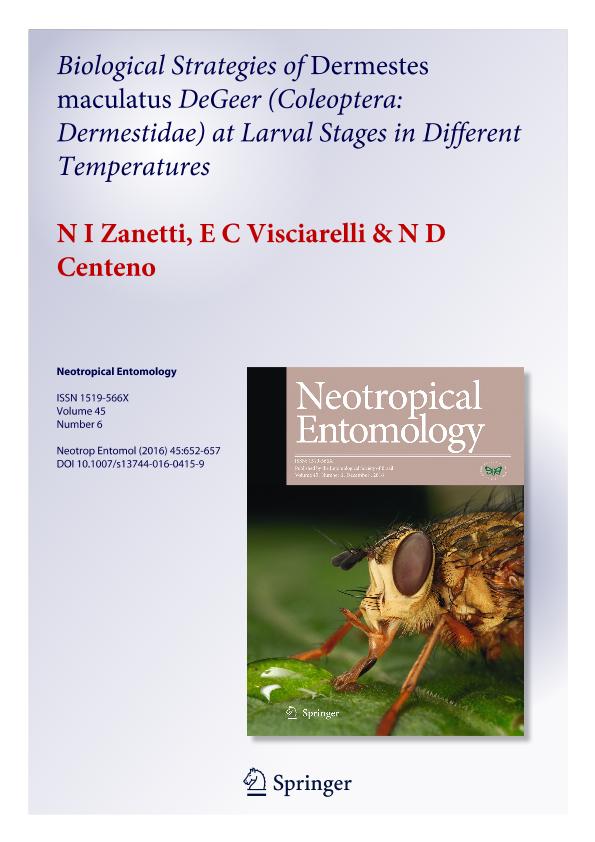Artículo
Biological strategies of Dermestes maculatus DeGeer (Coleoptera: Dermestidae) at larval stages in different temperatures
Fecha de publicación:
05/2016
Editorial:
Sociedade Entomológica do Brasil
Revista:
Neotropical Entomology
ISSN:
1519-566X
e-ISSN:
1678-8052
Idioma:
Inglés
Tipo de recurso:
Artículo publicado
Clasificación temática:
Resumen
The intraspecific variation in larval instars is a widely distributed phenomenon amongst holometabolous insects. Several factors can affect the number of instars, such as temperature, humidity, and density. Only a few references could be found in the literature because the invariability in the number of larval instars is considered normal, and the issue has raised little to no interest. Despite this, no study to date has intended to assess or focus on the larval development. Here, we analyzed the effect of different rearing temperature on the larval stage of Dermestes maculatus DeGeer (Coleoptera: Dermestidae). The results indicated that at all temperatures, L5 represented a decisive point for individuals as well as the other later larval instars, because the next step to follow was to pupate or molt to the next larval instar. Furthermore, there were mainly two populations, L5 and L6, although in different proportions according to temperature. We also found that at a greater number of instars, the larval development at all temperatures lasted longer. Moreover, the exponential model was the best adjustment in the developmental time of all populations as well as for the accumulated developmental time of L1–L4. Thus, we conclude that random factors such as genetics could probably cause interspecific variability in D. maculatus larval development.
Palabras clave:
CADAVERIC FAUNA
,
DEVELOPMENT
,
HOLOMETABOLOUS INSECTS
,
LIFE CYCLE
,
SKIN BEETLES
Archivos asociados
Licencia
Identificadores
Colecciones
Articulos(SEDE CENTRAL)
Articulos de SEDE CENTRAL
Articulos de SEDE CENTRAL
Citación
Zanetti, Noelia Inés; Visciarelli, Elena Concepcion; Centeno, Néstor Daniel; Biological strategies of Dermestes maculatus DeGeer (Coleoptera: Dermestidae) at larval stages in different temperatures; Sociedade Entomológica do Brasil; Neotropical Entomology; 45; 6; 5-2016; 652-657
Compartir
Altmétricas




